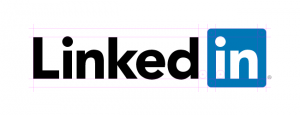On April 9 LinkedIn purchased Lynda.com, a provider of quality courses and online videos that made its name in teaching consumers and professionals how to use technology. Late last week Goldie Blumenstyk in the Chronicle of Higher Education analyzed the move in How LinkedIn’s Latest Move May Matter to Colleges.
Her point can be captured in this quote:
[I]t’s a sign of the growing interest in making academic and other educational credentials more visible and transparent to employers and others with reason to see them.
LinkedIn offers college rankings, university pages, and tools to support the decision on where to attend college. Crucially, it also provides tools for people looking for jobs and for companies looking to fill job openings. Ms. Blumenstyk cites Ryan Craig, an education investor, who said said
[T]he most fundamental disruption facing colleges will come once a “digital marketplace for human capital” takes hold.
The question before us is whether or not LinkedIn is going to (soon) become this wide-spread marketplace. Pieces are falling in place for LinkedIn. People will be able to take Lynda.com classes and have their LinkedIn profile automatically updated. Companies will be able to trust these updated certificates more than member-generated ones. Further, these automatically updated certificates will be more easily searchable since LinkedIn/Lynda will be more consistent with their tagging. Given these two changes (increased trust and better searchability) the tags for the Lynda courses will be more valuable and thus desired than those for non-Lynda courses. This would drive more students to Lynda for courses that they think would be valued by employers.
What is a college to do? It is clear that the college cannot act on its own. If every college created its own tags for its own courses, this would require that companies learn the vocabulary for each college from which it hopes to hire…something that clearly is sub-optimal. So, again, what is a college to do? Here is one possible approach (assuming a motivated group of cooperative-feeling academics) that would be easier to implement for institutions that have stayed on top of their learning goals and assurance of learning activities for assessment bodies:
- Form a working group across multiple institutions for this pilot.
- This working group should come up with a superset of program-level learning goals (e.g., these) from across all the institutions.
- Have each institution choose 20 classes from similar areas (e.g., economics, finance, or engineering) and tag each class for the applicable program-level learning goals.
- Now have the working group come up with class-specific knowledge tags for each of the classes. The working group should come up with standards for how many tags should be the norm for each class.
- Each institution would have to come up with a way for students to opt in to the sharing of information about courses taken.
- The institutions would have to get their technical staffs together with LinkedIn’s technical staff in order to come up with an API for uploading these tags to LinkedIn.
- Further down the line, national organizations for each academic area might think of defining a standard vocabulary for each area.
- Also, colleges and universities would want to publicize these tags in their course catalogs so that students would know what benefit that he/she would receive. Further, faculty would have to be given tools for assigning and then maintaining the tags for their courses.
This is quite the commitment (and, regardless of how it appears, provides just a glimpse of the complexity of the process) but the alternative is to cede the benefits that LinkedIn can fairly easily grab…and, with them, a good sized chunk of the future education market.
